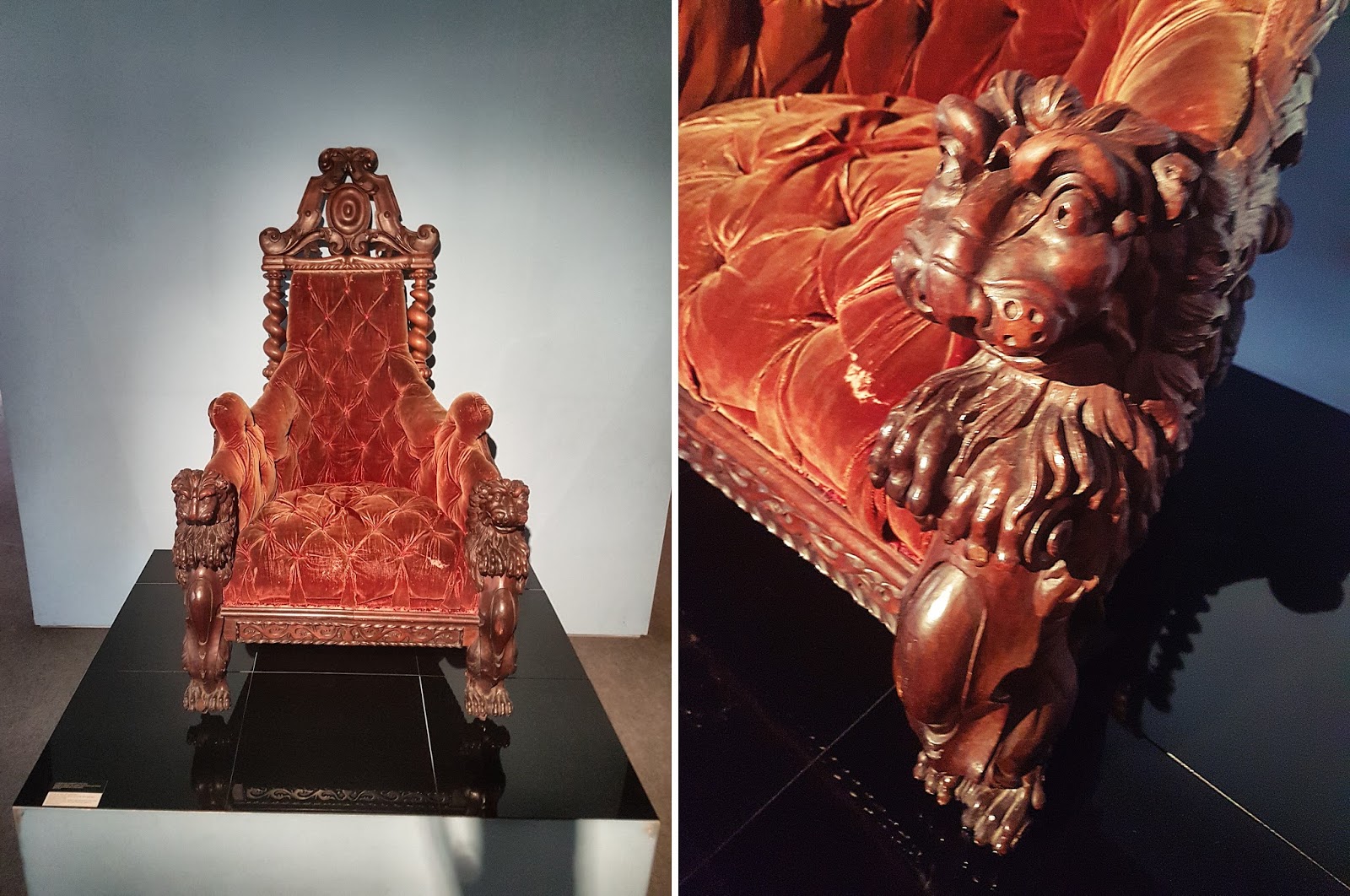
Museu Nacional do Traje
—
Lisboa
—
The Costume Museum (which would be more appropriately called Fashion History Museum in English) is the upper floor of a lovely old manse, and the setting makes the whole journey through the 18th century through to present-day very atmospheric. The entrance is really beautiful...all the details (floor, ceiling, decoration etc.) are so historical and perfectly well made, the rooms are filled with stucco, ornamental paintings and beautiful tiles that teleports us to the past.
The dresses and suits are set up on simple clothes forms throughout elaborately decorated palace rooms, and you almost feel like you are walking into a party where the ladies and gents are perfectly dressed in another century. I loved it!!! here's some examples that i liked the most, but there was many more outfits through the entire museum.

Open since 1977, this museum shows the evolution of fashion, especially among the upper classes. It's housed in a romantic manse with a small baroque chapel, and the collection goes from the romantic period to the present (1830-2000).
Many of the 40,000 pieces (not all of them on display) were donated from private collections, but there are also a few used by Queen Amelia. Everything (including underwear and accessories) is found in a handful of rooms with stucco ceilings and walls covered in baroque tiles.

The museum’s highlight is its collection of 18th-century and Empire court costumes. The collections of accessories include buttons, fans, bags, hats, shoes, shawls and undergarments. Besides linen and regional costumes, the museum displays materials and equipment relating to textile production.



 |
| 1750's Socks |


 |
| 1950's CHANEL Nº5 |








 |
| Textile machinery |
was super interesting to see the evolution that several pieces have had over the years, that the tastes were not always the same and that the changes of the society influenced immensely (and obviously they still continue to influence) the fashion and the way of dressing up.
—
Stage Costumes
—
Stage costumes of great historical accuracy, trying to reproduce with exactitude the real period costumes of the characters they clothe. Manufactured between 1881 and 1896, they are in an excellent state of preservation, after having been restored. They are made of high quality fabrics and materials. This nucleus also has a remarkable collection of arms (false and authentic) and stage jewellery. There are period photographs of all these costumes worn by the respective actors; there are no costume designs. Presented to the public in two exhibitions.
- Nucleus "Teatro do Povo" / "Teatro Nacional Popular" (People’s Theatre / National Popular Theatre) -
Costumes conceived by important theatrical designers, with markedly ideological (nationalistic) influences, executed with great mastery but using poor quality materials and fabrics, yet creating spectacular effects. Dating from 1935 to 1955, they are in a good state of conservation, although some have been greatly restores. There are stage photographs and a significant number of original designs. Part of this nucleus was presented in the exhibition "Os Clássicos em Lisboa" (The Classics in Lisbon).




 |
| Where the magic begins |
 |
| First Theatre machinery |


 |
| I would totally wear all these garments, so gorgeous!!! |

It is well worth visiting the
museum to try to understand a lot the origin and evolution of the
pieces that we wear today. Even if you don't want to go because of the
exhibition of the costume, it is worth visiting the beautiful palace and
church where the museum is installed, or even the Botanical Park of
Monteiro-mor, which is a park that is attached to the palace that has centenary trees some were brought from different countries.












This was a great way to spend my Saturday!!! I feel very accomplished...sometimes is great to enrich our knowledge with some culture. The culture deserves our total attention, that is the only way that we can understand how things work these days - Totally recommend you to go visit this museum!







Post a Comment